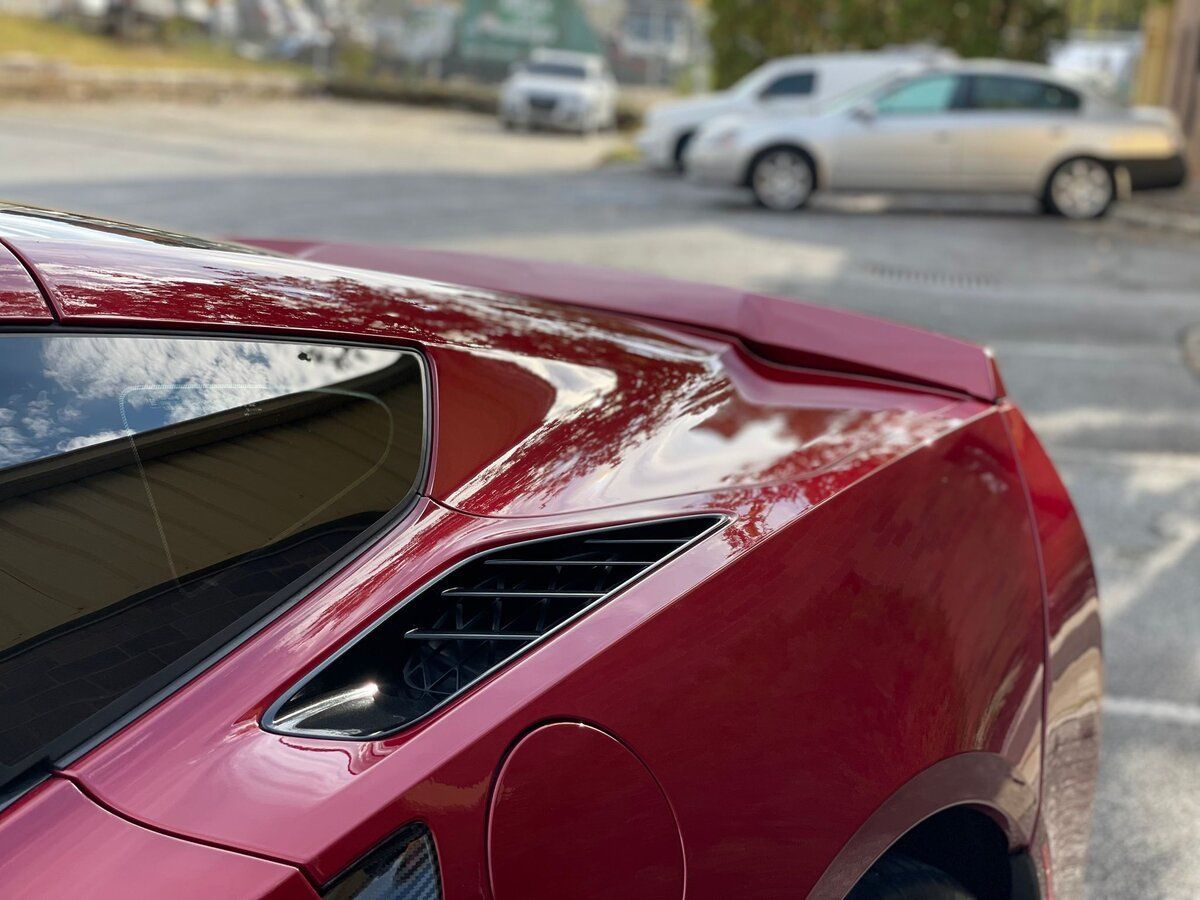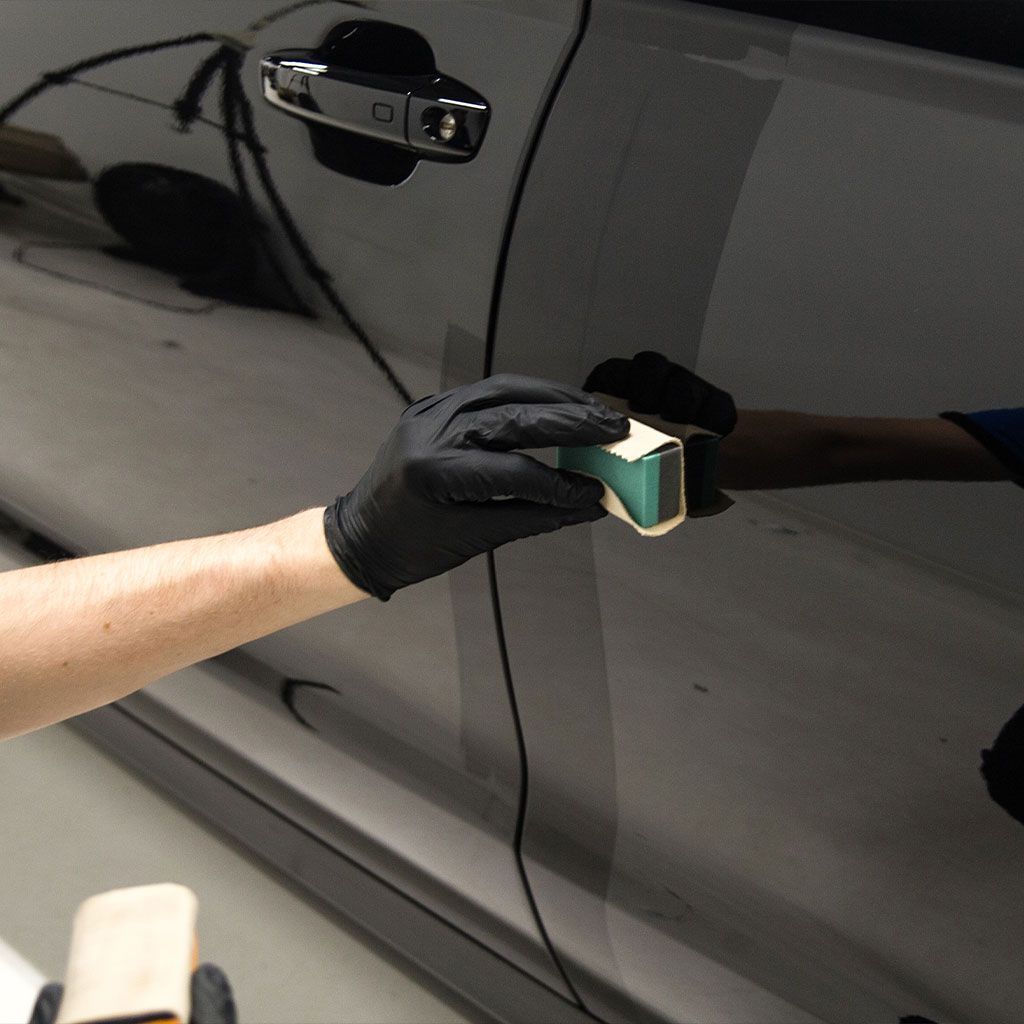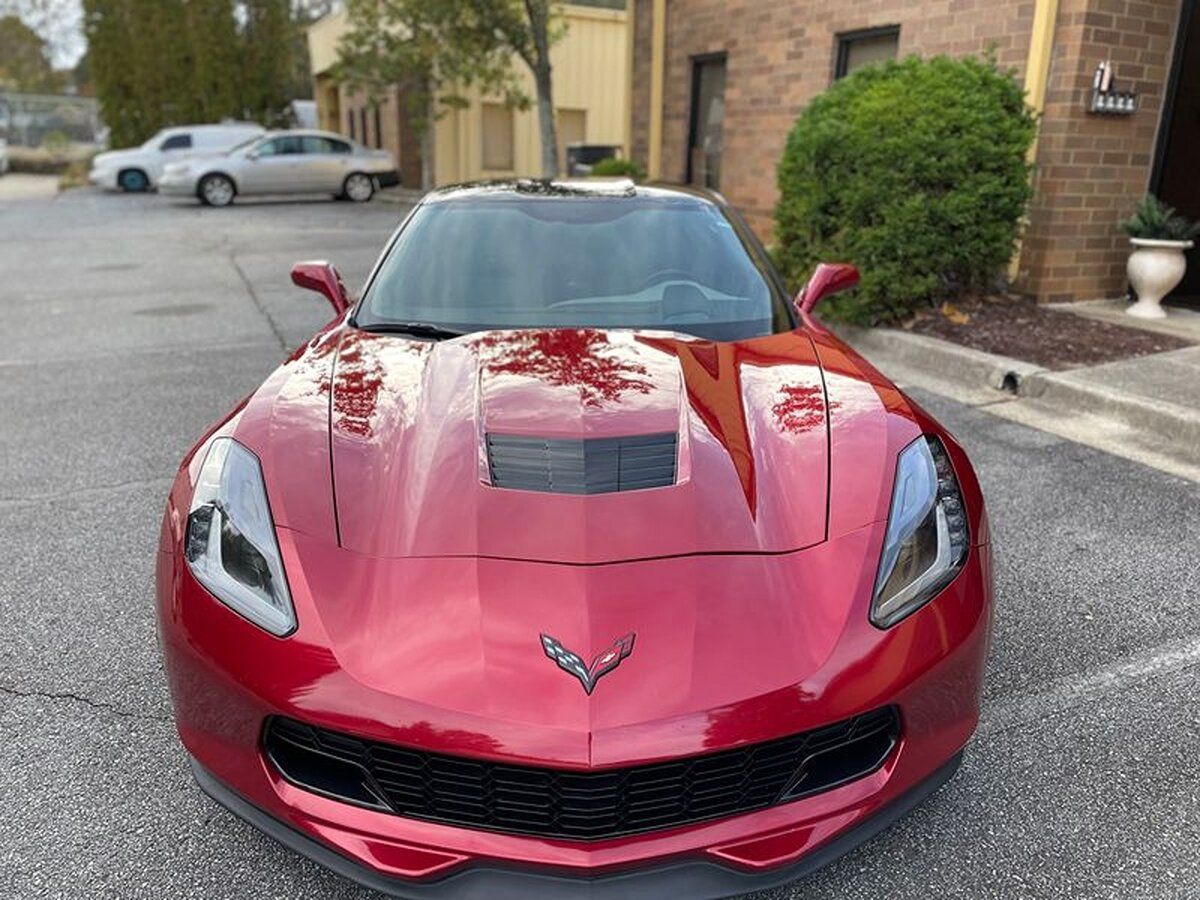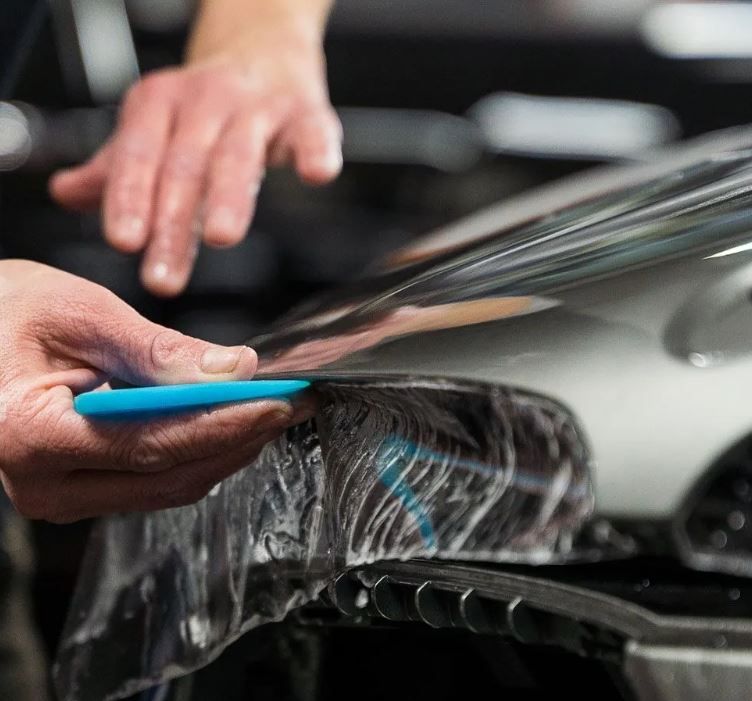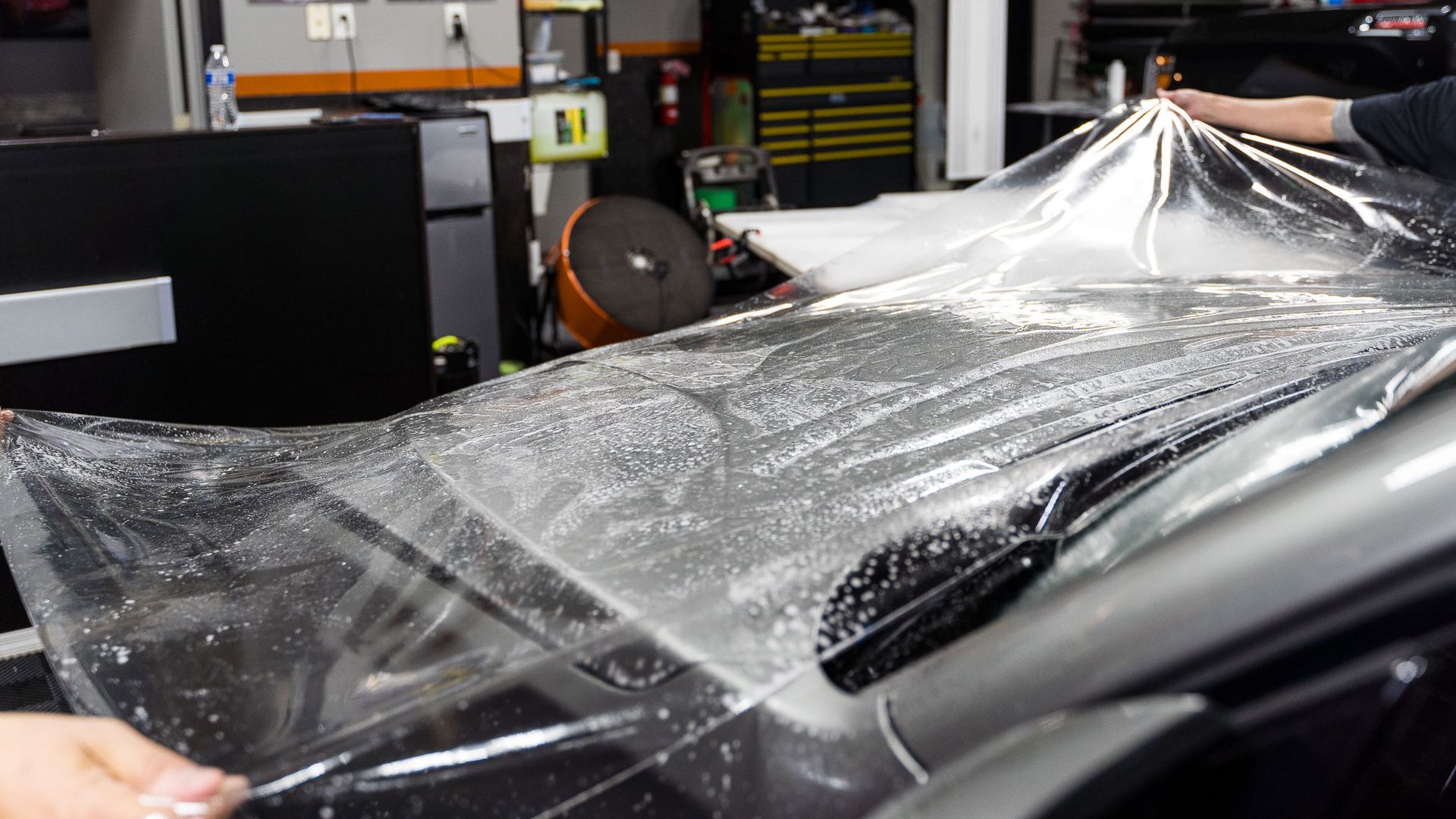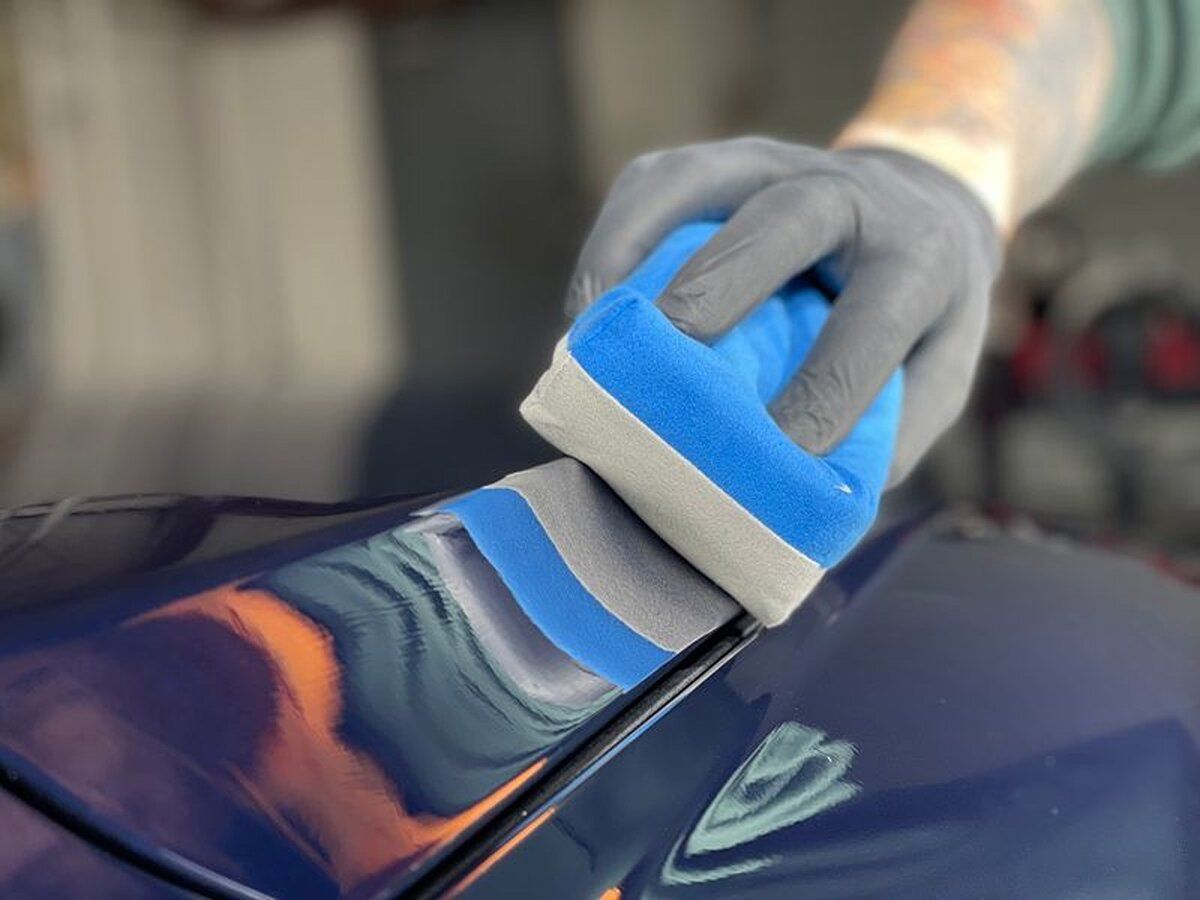Ceramic Coating vs. Traditional Wax: Which Provides the Best Car Protection?
GET A QUOTECALL (770) 722-3486
Ceramic coating offers a stronger defense compared to traditional wax. Unlike wax that forms a barrier, ceramic coating connects chemically with car paint, offering long-lasting and robust protection. However, while ceramic coating offers enhanced longevity, traditional wax brings its own unique benefits, like being more affordable and easier to apply. Now let’s see what more ceramic coating has to offer.
Ceramic coatings provide longer-lasting protection, higher resistance to environmental contaminants, and reduced maintenance requirements compared to traditional wax. While traditional wax offers gloss and moderate protection, ceramic coatings excel in aesthetics, durability and overall vehicle surface preservation.
Ceramic Coating and Traditional Wax Explained
When it comes to safeguarding your car's paint, ceramic coating and traditional wax take center stage. They act as protective shields that fend off the elements of nature. Now, let's dissect how each method functions to gain a clear understanding of their unique traits.
Traditional Wax
Traditional wax can be likened to a shield made of soft, malleable materials like beeswax or carnauba wax. When applied to your car's paint, it creates a protective barrier against environmental elements such as dirt, dust, and UV rays. This physical layer of defense lessens the potential harm that exposure to the outside world might cause.
Ceramic Coating
Conversely, ceramic coating forms a force field that chemically bonds with your car's paint. Unlike wax, which establishes a mere physical barrier, ceramic coatings forge a robust chemical bond with the surface. This bond enhances durability against heat, UV rays, environmental contaminants, and detergents. It's like invisible armor that melds with your car's paint to provide long-lasting protection.
Here's an analogy to illustrate the disparity: Traditional wax is akin to donning a raincoat to shield yourself from getting wet in the rain, while ceramic coating is like applying a sturdy waterproof coating to your skin. For example, if you reside in an area with extreme weather conditions such as scorching summers or harsh winters, ceramic coating acts as a high-tech suit of armor for your car’s paintwork, shielding it from environmental challenges.
Benefits of Ceramic Coating
Ceramic coatings offer a range of benefits that go beyond what traditional wax can provide. These aspects are crucial when deciding whether to invest in a ceramic coating for your car.
- Enhanced Durability: One of the most appealing features of ceramic coatings is their exceptional durability—lasting for 2 to 5 years or more, providing long-term protection against environmental factors such as heat, UV rays, and contaminants like bird droppings and tree sap. This extended lifespan reduces the frequency of detailing and ensures that your car remains protected with minimal effort.
- Superior Chemical Resistance: The chemical resistance of a ceramic coating far exceeds that of traditional wax. This is particularly important because harsh chemicals found in some detergents and environmental contaminants can damage a car's paintwork over time. A ceramic coating acts as a barrier, effectively repelling these substances and preventing them from causing harm to the underlying surface. Your car is shielded from the damaging effects of acidic elements such as bird droppings or tree sap, both of which have been known to etch into traditional paint finishes if left unattended. Moreover, the inherent resistance to environmental fallout makes maintenance significantly easier, as tough stains are less likely to adhere to the protected surface.
- Exceptional UV Protection: Ceramic coatings' outstanding defense against the sun's harmful UV rays is another key advantage. Prolonged exposure to UV radiation can cause paint to fade or oxidize, leading to a dull and lackluster appearance. By forming a chemically resistant barrier on the car's surface, ceramic coatings effectively shield the paint from UV damage, preserving its original color and gloss.
These significant advantages make it clear that opting for a ceramic coating provides exceptional protection for your car's exterior when compared to traditional wax.
Durability of Ceramic Finish Versus Wax
When it comes to car protection, durability is a key factor to consider. Ceramic coatings are renowned for their long-lasting shield effect, with an average durability ranging from 2 to 5 years. This means you can have peace of mind knowing that your car is well protected for an extended period without the need for frequent reapplication. On the other hand, traditional car wax typically requires reapplication every 4 to 6 weeks for general-use vehicles. This stark contrast in longevity underscores the superior endurance of ceramic coatings over traditional wax, providing a protective layer that lasts significantly longer.
The extended durability of ceramic coatings translates to less frequent upkeep and maintenance, giving car owners the advantage of more time between protective treatments. This can be particularly advantageous for individuals with busy schedules or those who prefer minimal involvement in ongoing car care routines. Consider a scenario where two cars, one treated with ceramic coating and the other with traditional wax, are both exposed to the same environmental conditions, such as UV rays, rain, dirt, and dust. Over time, the differences in protection become evident as the ceramic-coated car maintains its glossy finish and protective layer for several years without requiring reapplication, while the wax-treated car necessitates regular waxing every few weeks to uphold its shield against environmental elements.
In essence, the enhanced durability of ceramic coatings compared to traditional car wax signifies a significant advantage in terms of prolonged protection and reduced maintenance, making it a compelling choice for individuals seeking long-term safeguarding of their vehicles' exterior surfaces. The key to maximizing car protection lies not only in choosing the right products but also in understanding the best application methods.
Shine and Smoothness: Aesthetic Considerations
When it comes to car detailing, aesthetics are crucial. The shine and smoothness that ceramic coatings and traditional wax provide for your car can significantly impact its overall appearance. Ceramic coatings result in a high-shine finish that can make your car stand out when polished, giving off a sophisticated gleam. On the other hand, traditional wax brings forth a medium to high gloss that adds depth to the finish, enhancing the overall look of your car.
Gloss and Shine: Traditional wax provides a medium to high gloss, resulting in a deep, lustrous sheen and adding depth to the finish, while ceramic coatings offer a high shine with impressive reflective properties.
Smoothness: In terms of smoothness, both ceramic coatings and traditional wax contribute to the smoothness of your car's paintwork. While ceramic coatings create an impressively smooth surface, traditional wax also contributes to the smoothness of your vehicle.
- Ceramic Coating: Creates an impressively smooth surface with a rating of around 9.5/10.
- Traditional Wax: Also contributes to smoothness, with an average rating of 7/10.
Understanding the aesthetic qualities provided by ceramic coatings and traditional wax gives us insight into how each option impacts the appearance and feel of your car’s exterior surface.
Cost Analysis: Coating and Wax
When deciding between ceramic coatings and traditional waxing for your car, it's crucial to consider the upfront and long-term costs. Ceramic coatings require a higher initial investment due to the advanced technology used in their formulation. On the other hand, traditional wax applications are comparatively less expensive in the short term. However, it's essential to look at the bigger picture as we delve deeper into the cost comparison to make an informed decision.
Ceramic coatings stand out in terms of durability, offering longer-lasting protection for several years without the need for frequent reapplications. This means that, while the initial investment may be higher, the longevity of ceramic coatings offsets the long-term costs associated with regular wax reapplication. Conversely, traditional waxes provide protection for only three to six months, necessitating more frequent application to maintain the glossy finish and protection against environmental hazards.
Initial Investment
The initial cost of ceramic coatings can indeed be daunting, especially when compared to traditional waxes. This is due to the advanced technology and professional knowledge required for their application. However, considering their long-lasting protection for several years, this initial investment proves to be cost-effective in the long run.
Long-Term Costs
While traditional waxes may seem economical upfront, the accumulated costs over time due to their frequent reapplication add up. When you consider the expense of buying new wax products every few months, investing time in their application or paying for professional detailing services regularly, it becomes clear that traditional waxing involves significant long-term costs.
For instance, let's consider a five-year period. Suppose you have a ceramic coating applied to your car, and it continues to provide superior protection without requiring reapplication during this timeframe. In contrast, if you opt for traditional waxing, you would need to reapply it every three to six months. The cumulative cost of purchasing wax products or availing of professional detailing services every few months adds up significantly over five years. In essence, while ceramic coatings involve a higher initial expense due to their advanced technology and skilled application requirements, they offer substantial value with their long-lasting protection. Traditional waxing, despite its lower initial cost, demands frequent reapplication and ultimately results in higher long-term expenses.
Understanding the financial aspects of ceramic coating versus traditional waxing helps in making an informed choice based on both immediate budget constraints and long-term cost-effectiveness. Making an informed decision about car protection methods involves carefully balancing upfront expenses with long-term cost-effectiveness. By understanding the value each option offers, car owners can make a choice that aligns with their preferences and financial considerations.
Cutting-Edge Ceramic Coating Solutions in Marietta, GA
LeJeune Ceramic Coating & Paint Protection in Marietta, GA, offers state-of-the-art vehicle paint protection with our
ceramic coating services. Our cutting-edge ceramic coating solutions offer unparalleled toughness and longevity, guaranteeing that your car is protected against environmental dangers and UV rays. It's time to say goodbye to regular waxing and welcome to a glossy, long-lasting finish. Make your investment safe with our cutting-edge ceramic coatings. Discover superior car maintenance. Make an appointment right now or call us at
(770) 722-3486 to preserve the aesthetic appeal of your car for many years to come!
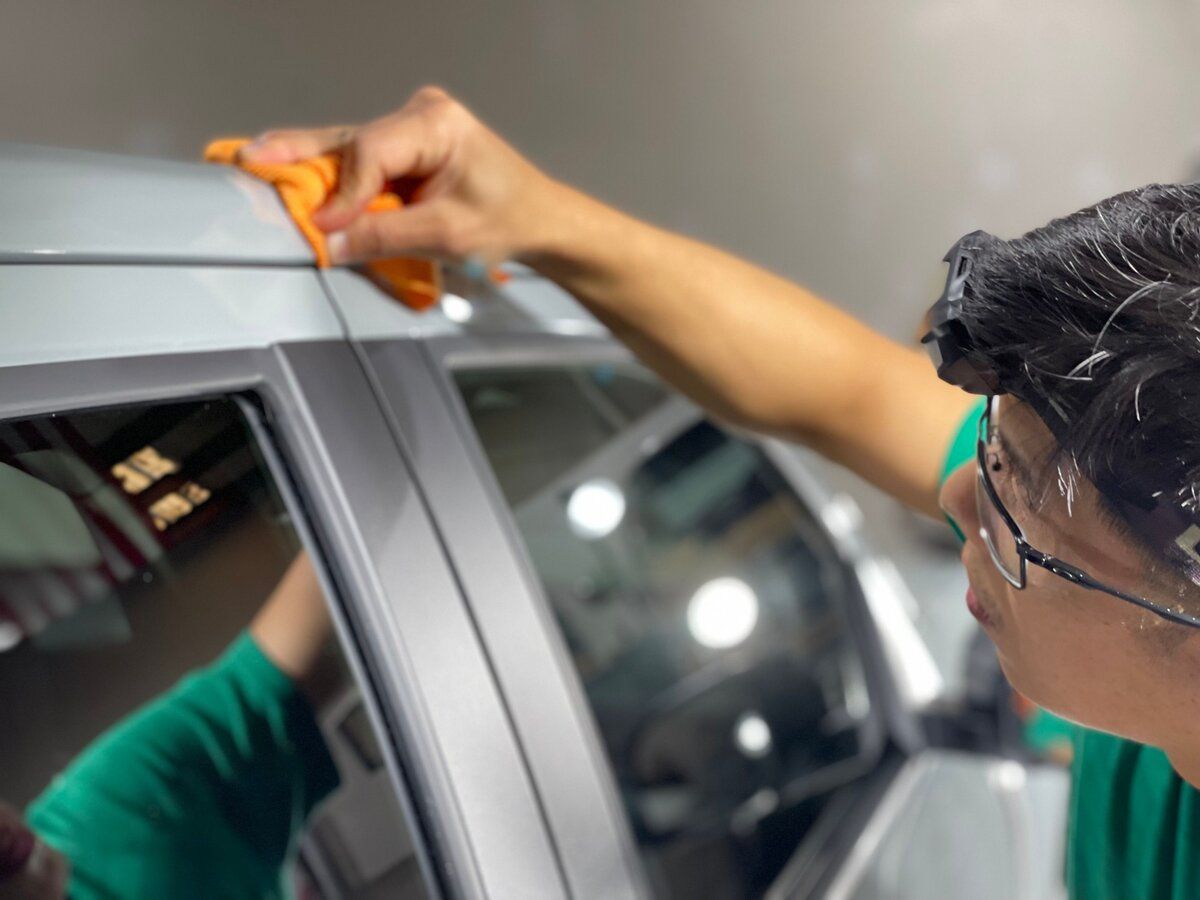

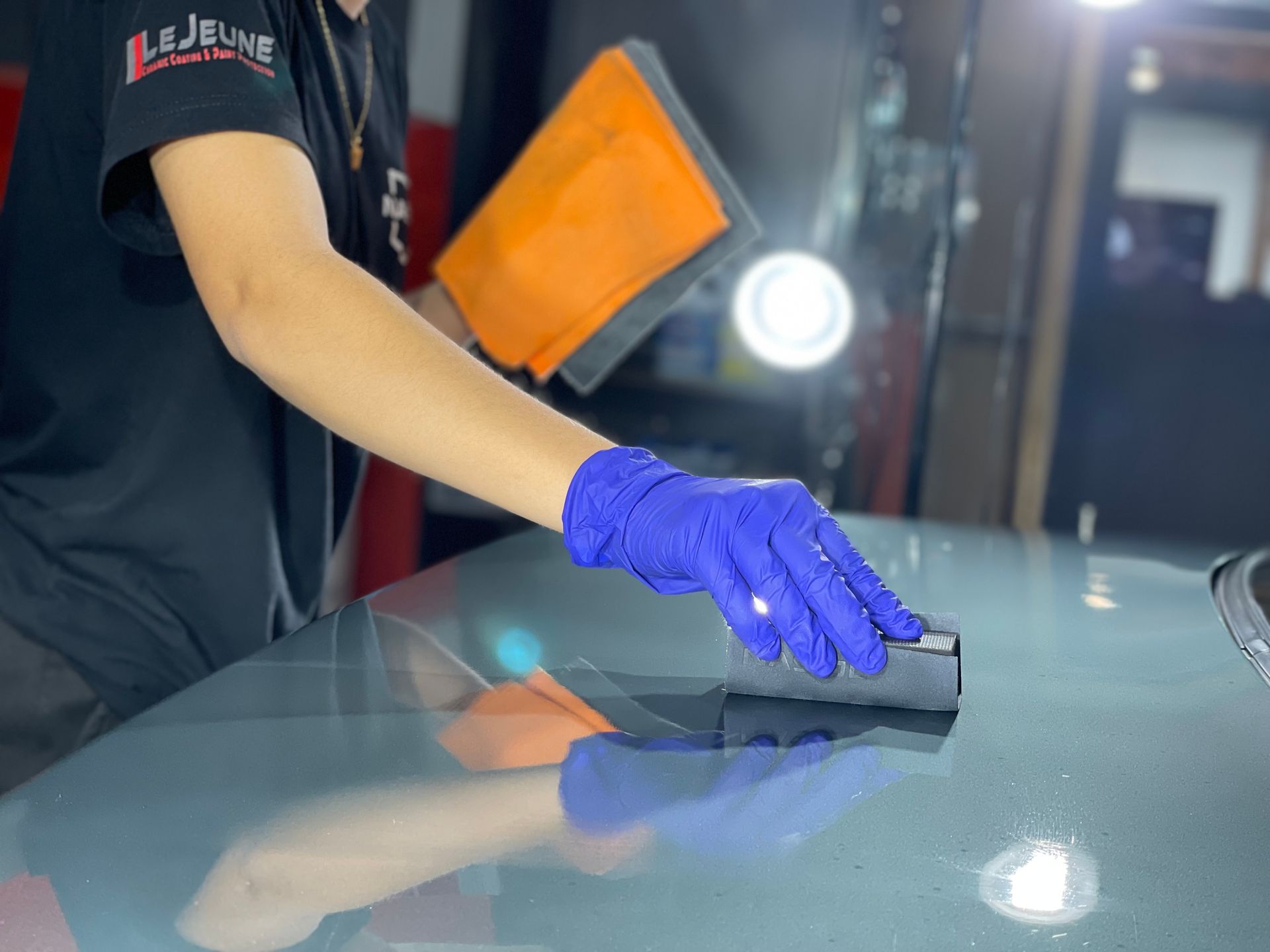
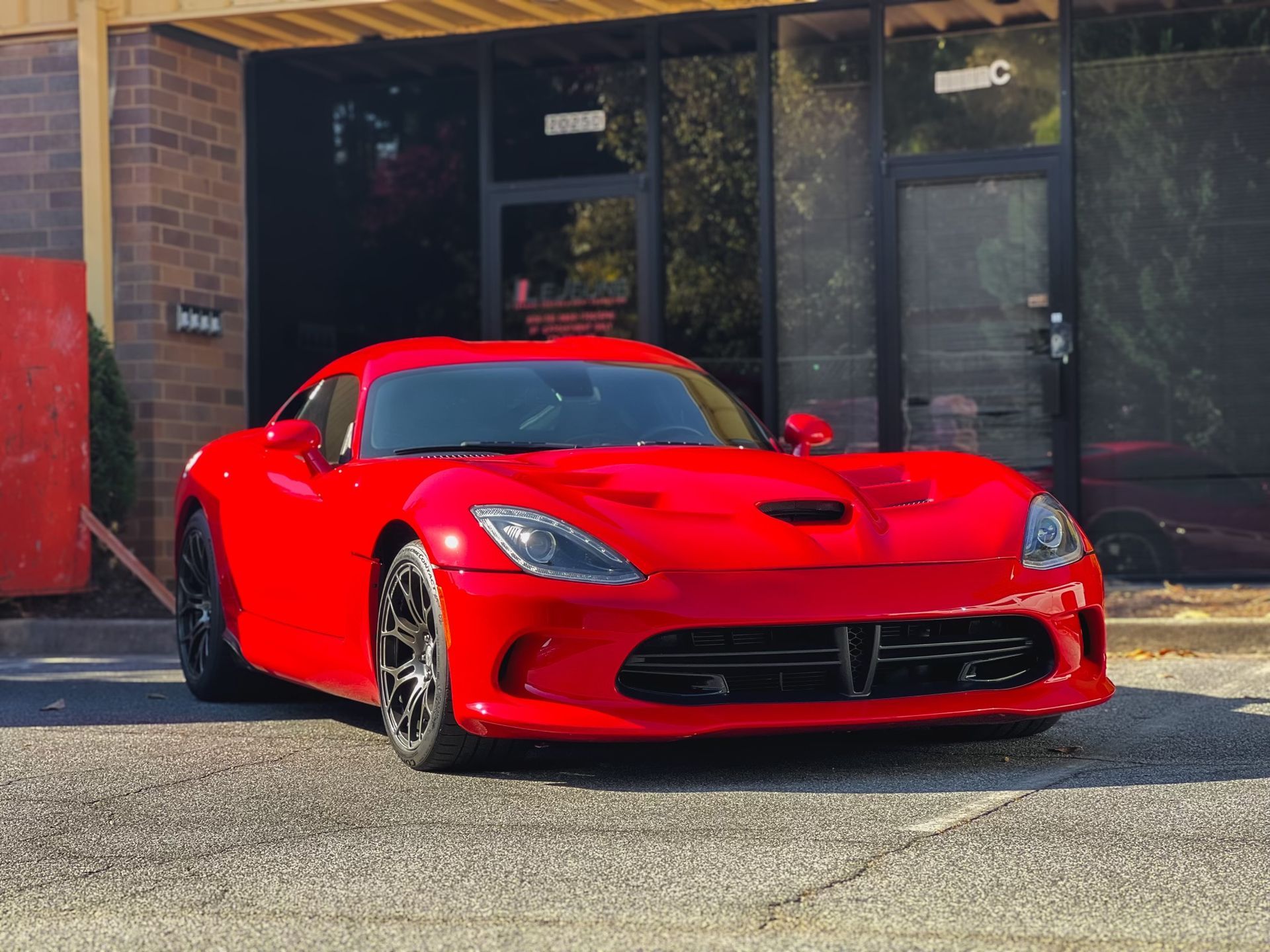

LeJeune Ceramic Coating & Paint Protection arrived on the auto detailing scene in 2019, built on the lifelong passion for car, truck, and SUV care and profound paint protection packages that feature high-end ceramic coatings, paint protection film, and even Dr. Beasley’s Matte Nano-Resin Pro. Always on staff, we have professional certified vehicle detailers and paint correction experts that bring and maintain vehicle value on all makes and models in the Marietta, Georgia area. Only at our auto detailing shop will you get the level of attention to detail and products that we work with.
Quick links
Our Location
2052 Airport Ct SE, Suite D Marietta, GA 30060 United States
CONTACT US
Phone: (770) 722-3486
Email: info@lejeunedetailing.com
Designed by the team at Detailers Roadmap, a platform developed for detailing operators across the globe.
All Rights Reserved | 8bitcreative, LLC | LeJeune Ceramic Coating & Paint Correction


